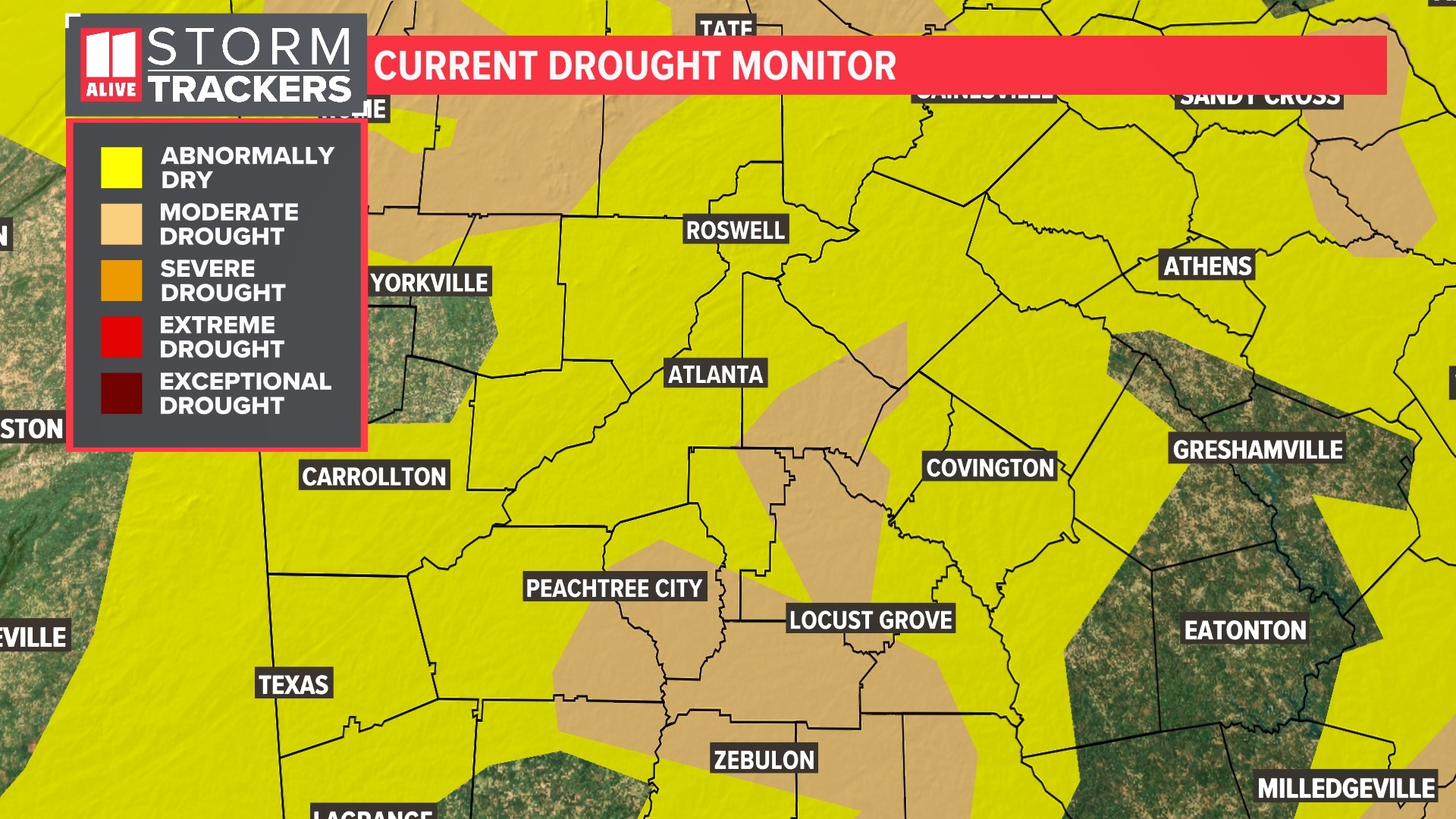ATLANTA — Yes, Luke Bryan said it best. Rain is a good thing.
And thanks to the showers and storms north Georgia received in the last week, we've seen modest improvements in our drought conditions.
In the latest drought monitor released Thursday, July 14, there are no longer any areas within a level D2 Severe Drought. This is a change from the previous week when we had severe drought in Gilmer, Lumpkin, Dawson and Pickens counties in north Georgia, as well as some other areas scattered throughout the state.

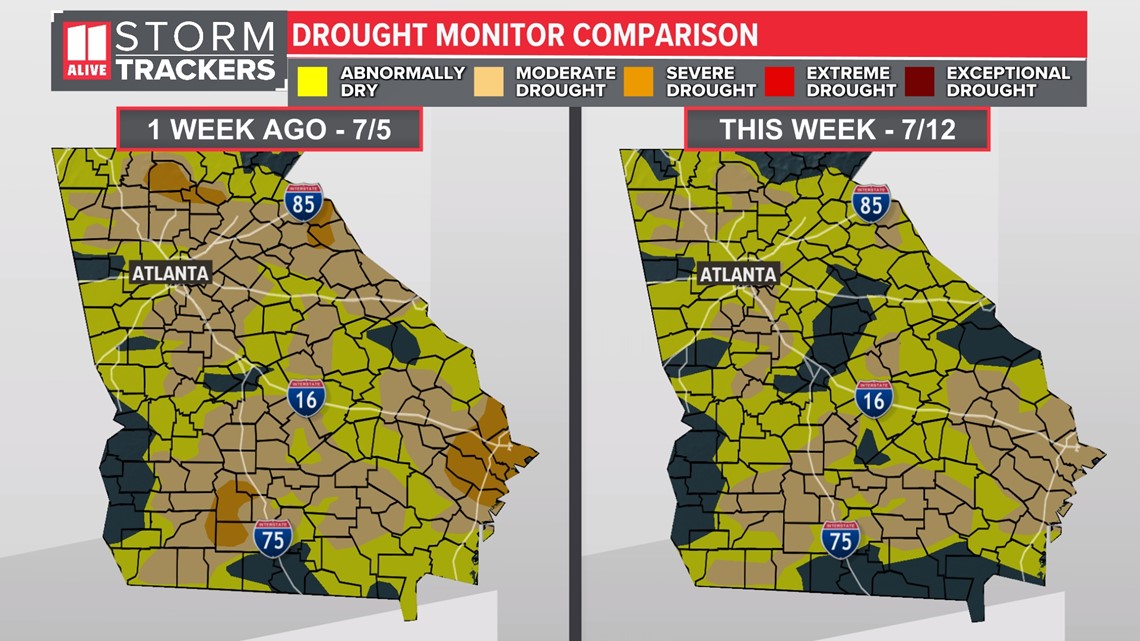
Around the Atlanta metro: Fulton, most of Gwinnett and Clayton counties are no longer in a drought. Moderate drought still persists on the south side of the metro through Fayette, Henry and Spalding counties. Abnormally dry conditions still continue in the inner metro.

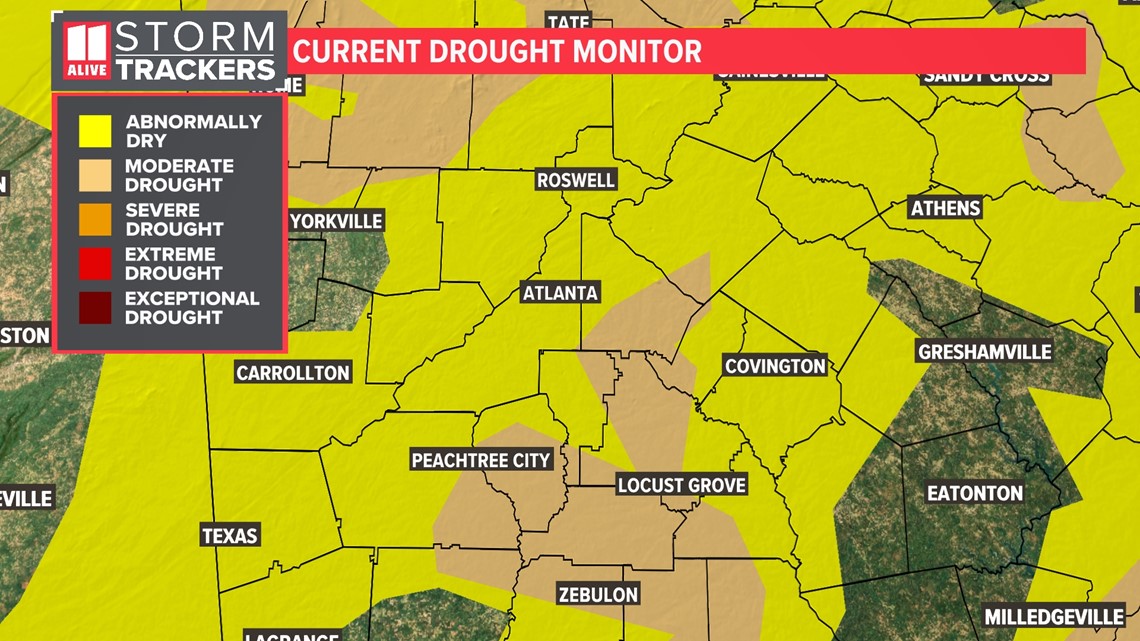
In the last week, many areas around north Georgia picked up an estimated 1 to 4 inches of rain. This led to a quick improvement in topsoil moisture in those locations.
Since July 1, Atlanta's Hartsfield-Jackson International Airport has received just shy of 3 inches of rainfall, a surplus of nearly three-quarters of an inch. The bulk of this fell on the evening of July 4, when heavy and strong storms delayed and interrupted many fireworks celebrations around the metro. This is above-average for the month-to-date. As a whole, July is one of our wetter months of the year with an average of 4.75 inches of rain.

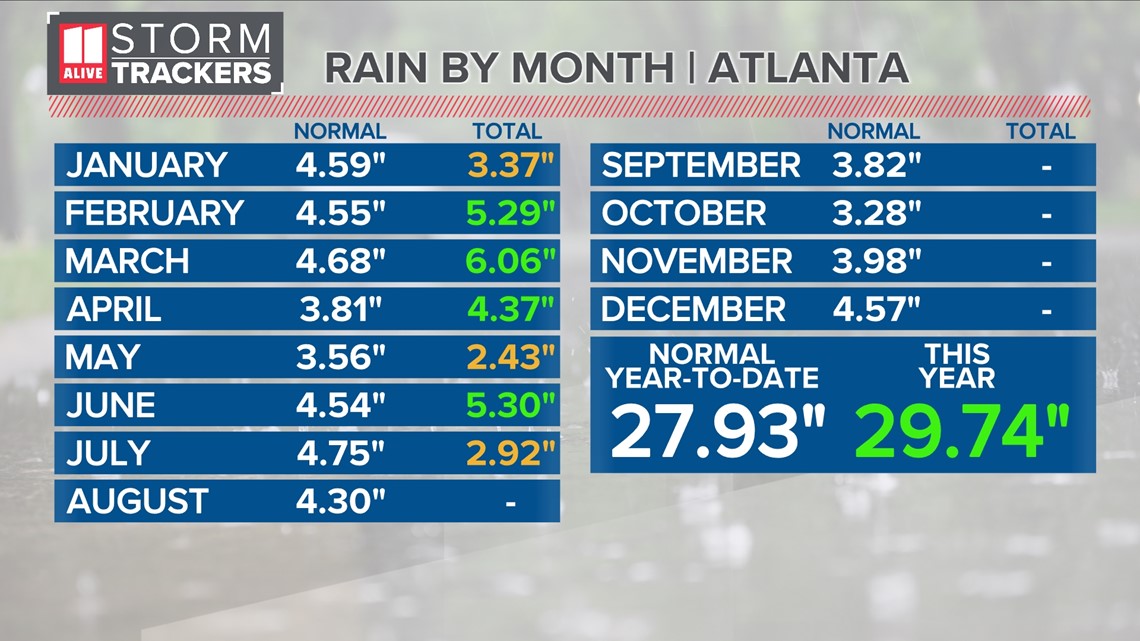
For the year through Wednesday, July 13, Atlanta has had just under 30 inches of rain.
The latest U.S. Drought Monitor, released Thursday morning, shows areas that are in drought through five classifications: "abnormally dry (D0), showing areas that may be going into or are coming out of drought, and four levels of drought: moderate (D1), severe (D2), extreme (D3) and exceptional (D4)." The data released represents soil moisture and rain amounts evaluated on Tuesdays.

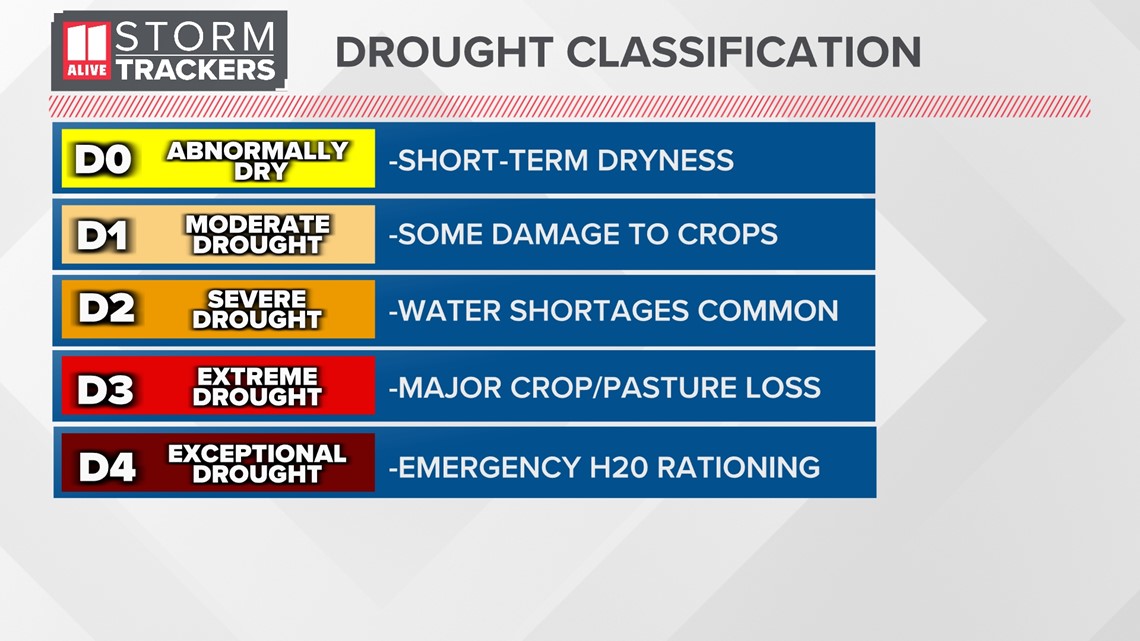
During a moderate drought, there are impacts to lawns and agriculture, and fire risk can be elevated. Crops become vulnerable as soil moisture turns low, gardens require more watering, and trees begin to show signs of stress.
Although we've seen improvements, we're not out of the woods just yet.

